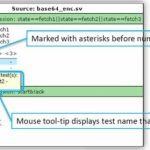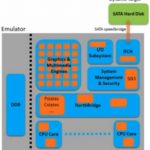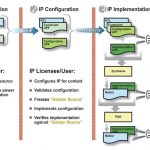If we take an insight into the semiconductor industry, we can easily find that mobile systems are the main drivers of this industry. The Smartphone business has remained at the top since a good number of years. Although the Smartphone sales growth has started showing a sign of stagnation, it is still a main contributor with a solid… Read More
Tag: simulation
Aldec updates two EDA product lines
Continuous, incremental improvement based on customer feedback and insight from researchers is a pillar of the Aldec EDA strategy. Within the last two weeks, two of the Aldec product lines – Riviera-PRO, and ALINT-PRO-CDC – have seen new version releases. Here’s a quick look at some of the highlights of both.
Riviera-PRO 2015.06… Read More
How Emulation Enables Complex Power Intent Modeling
As the number of CPU, GPU, and IP is growing in an SoC, power management is becoming more and more a complex task in itself. A single tool or methodology may not be enough for complete power management and verification of an SoC. In an SoC, there can be multiple modes of operations involving hardware and software interactions, different… Read More
Power Management Gets Tricky in IP Driven World
Today, an SoC can have multiple instances of an IP and also instances of many different IPs from different vendors. Every instance of an IP can work in a separate mode and requires a dedicated power arrangement which may only be formalized at the implementation stage. The power intent, if specified earlier, will need to be re-generated… Read More
SmartDV at DAC and More
As we are aware about SmartDV Technologies, a fast emerging company in IP space with offices in Bangalore and San Diego, its booth in 52ndDACwas located at a prominent position in front of DAC Pavilion on the exhibits floor. So, most of the crowd coming to attend sessions in DAC Pavilion had a glimpse of SmartDV. I met Deepak Kumar Tala… Read More
Synopsys Software Integrity: Find All the Bugs
A couple of days ago Synopsys announced that they were acquiring Quotium’s product Seeker. This is an interactive application security testing (IAST) product. Synopsys are acquiring the product and the R&D team, not the whole of Quotium. The Seeker solution is a pioneering solution for IAST that helps businesses find high-risk… Read More
Synopsys Earnings Call
Synopsys had their earnings announcement and call last week. They were good. In Aart’s own words:I’m happy to report that our second quarter results were very strong and solidify our outlook for the full year. We delivered revenue of $557 million, non-GAAP earnings per share of $0.68 and $155 million in operation cash flow.… Read More
Experts Talk at Mentor Booth
It’s less than four weeks to go at DAC 2015 and the program is final now. So I started investigating new technologies, trends, methodologies, and tools that will be unveiled and discussed in this DAC. In the hindsight of the semiconductor industry over the last year, I see 14nm technologies in the realization stage and 10nm beckoning… Read More
New Vivado release goes from Lab to UltraScale
Xilinx users will welcome the brand-new release of Vivado Design Suite 2015.1. For openers, device support for the latest FPGAs in the UltraScale family – XCVU440, XCVU190, and XCVU125 – has been added in the release, and early access code for the XCVU160 is available from a local Xilinx FAE. Installation has been streamlined, … Read More
Silvaco Swallows Invarian
Yesterday, Silvaco announced that it has acquired Invarian Inc. Details of the transaction were not disclosed.
Who is Invarian? They are a recognized leader in block-level to full-chip sign-off analysis for complex, high-performance ICs. Their unique methodology utilizes a parallel architecture and concurrent power-voltage-thermal… Read More










